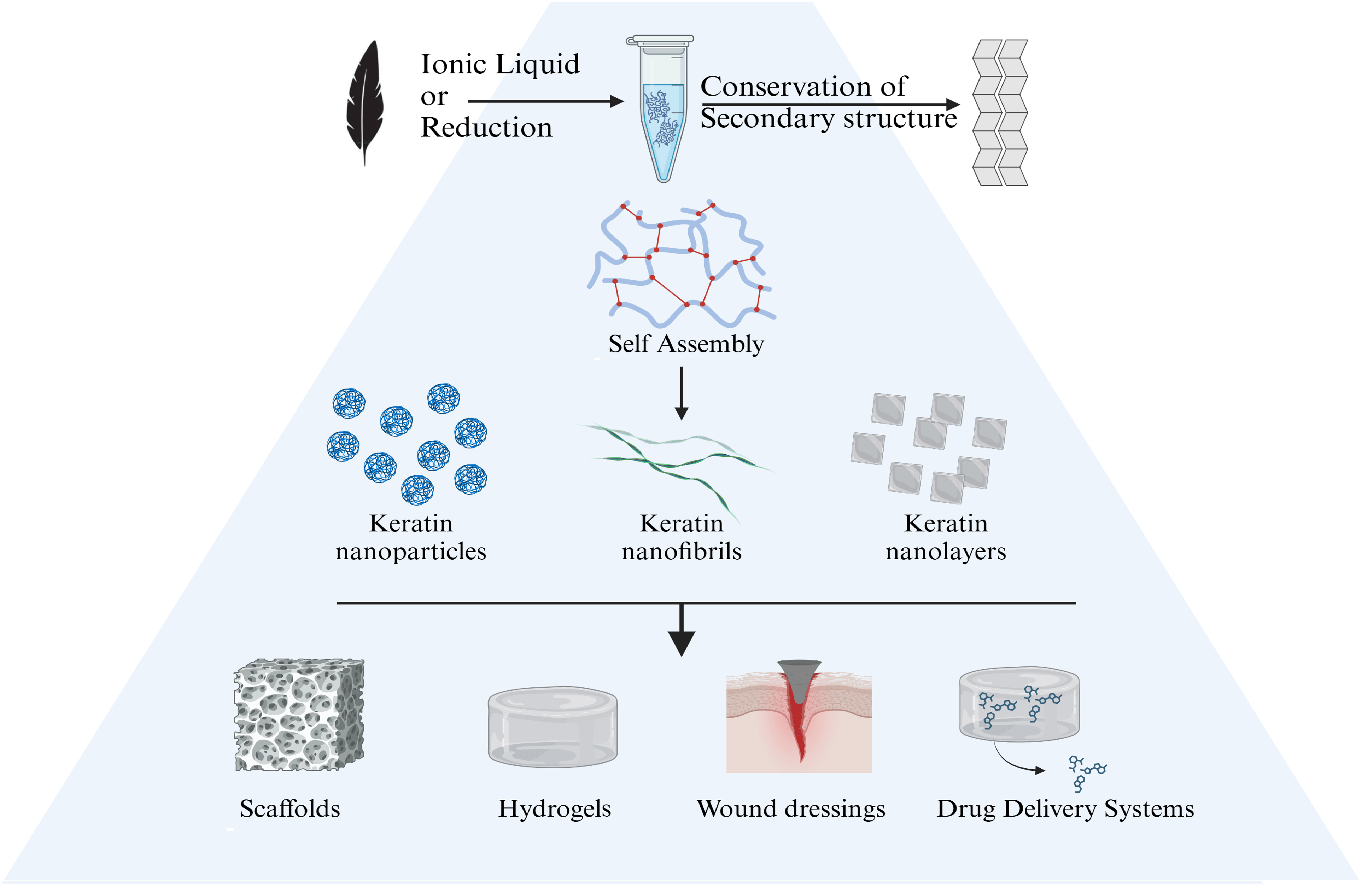 Open Access
Open Access
REVIEW
Synthesis and Properties of Biomimetic Self-Assembling Structures from Poultry Feather Keratin
School of Science and Technology, Università di Camerino, via Gentile III da Varano 7, Camerino, 62032, Italy
* Corresponding Author: Carlo Santulli. Email:
Journal of Renewable Materials 2025, 13(1), 1-19. https://doi.org/10.32604/jrm.2024.056251
Received 17 July 2024; Accepted 19 September 2024; Issue published 20 January 2025
Abstract
Taking a widely contaminated yet abundant waste, such as poultry feathers, and extracting keratin from this structure appears to be a real challenge whenever the preservation of the secondary structure of the protein is desired. This process would allow exploiting it in ways (e.g., in the biomedical field) that are inspired by a structure that is primarily designed for flight, therefore capable specifically of withstanding flexure and lateral buckling, also with very low thicknesses. The preservation of the structure is based on disulfide crosslinks, and it is offered with preference by some chemical treatments, mainly those based on ionic liquid and on a reduction process. However, the degree of preservation cannot always be precisely assessed; however, beyond chemical characterization, the formation of homogeneous gels can also suggest that the process was successful in this sense. An extraction respectful of nature’s intentions, considering that the secondary structure builds up according to the very function of the feathers in the animal, can be deemed to be biomimetic. In particular, biomimetic extractions comply with the very characteristics the protein was designed for to serve in the specific environmental and mechanical situation in which it is inserted. This review tries to elucidate in which cases this aim is achieved and for which specific applications a chicken feather keratin that has preserved its secondary structure can be suited.Graphic Abstract

Keywords
Cite This Article
 Copyright © 2025 The Author(s). Published by Tech Science Press.
Copyright © 2025 The Author(s). Published by Tech Science Press.This work is licensed under a Creative Commons Attribution 4.0 International License , which permits unrestricted use, distribution, and reproduction in any medium, provided the original work is properly cited.


 Submit a Paper
Submit a Paper Propose a Special lssue
Propose a Special lssue View Full Text
View Full Text Download PDF
Download PDF Downloads
Downloads
 Citation Tools
Citation Tools